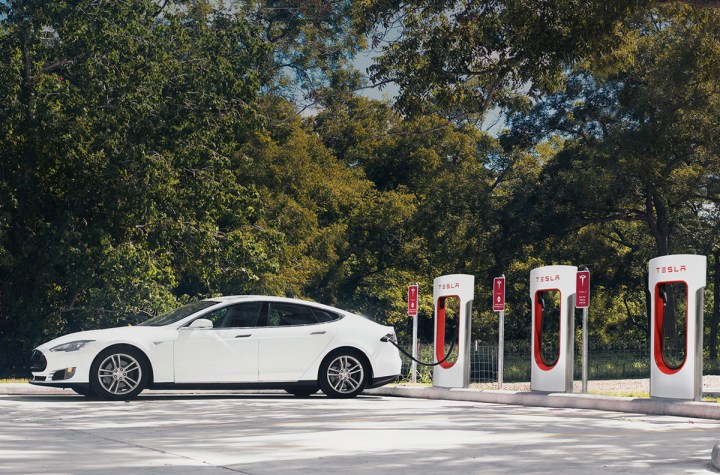
“Cars have always represented independence and the freedom to travel wherever and whenever people want to go,” Tesla wrote in a blog post. “To enable this freedom, building a charging network that provides quick, convenient, and long-distance travel is critical to the adoption of electric vehicles. One of our top priorities this year is to significantly increase capacity of our Supercharger network.”
So how will it go about doing this? Unfortunately, the answer isn’t quite as straightforward as you might like. First off, Tesla Model S and Model X cars ordered after January 15, 2017 will be granted 400kWh (kilowatt-hours) of free Supercharging credits, equivalent to about 1,000 miles, every year on the anniversary of their delivery. Tesla claims that its research has suggested that 400kWh actually accounts for the yearly amount of long-distance driving the average customer needs.
However, should you be an above-average driver, you’ll be charged “a small fee to Supercharge.” If you’re a resident of North America, pricing remains consistent within each state or province, whereas overseas, pricing is fixed within a country. In most areas of the world, you’ll be asked to pay per kWh, described as “the fairest way to pay for the exact energy need.” But that won’t be the case in all areas of the world — some local regulations require Tesla to charge per minute of usage instead. That said, Tesla says that it’s “actively working with regulators to update the rules.”
Ultimately, this Supercharge charging structure works out to about $15 for a road trip from San Francisco to Los Angeles, and about $120 from Los Angeles to New York. You can check out additional details about the program here.


